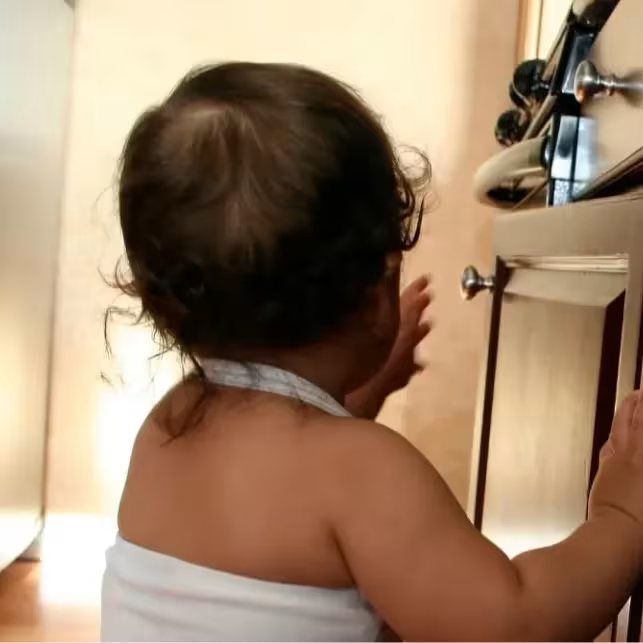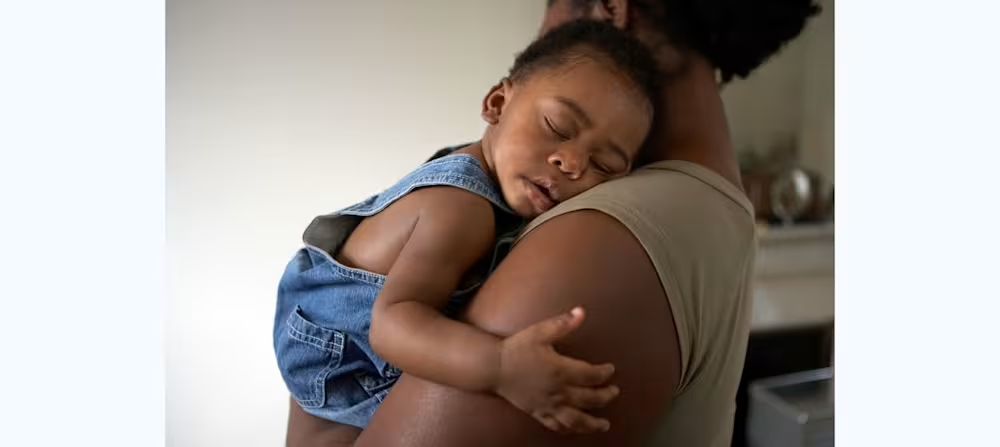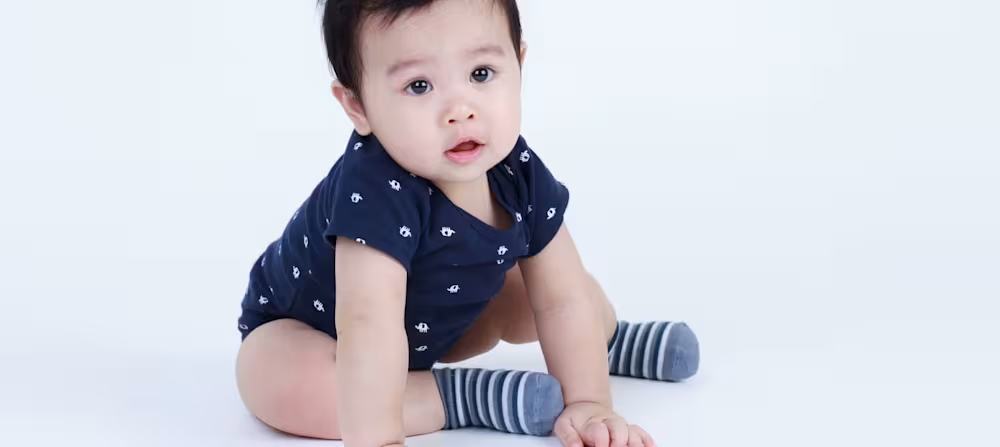When do babies start crawling: 6 tips to encourage crawling
Updated Oct 17, 2025

You and your baby have already experienced so many firsts together; their first smile, first laughs, the first diaper blowout… so many firsts! One of the most exciting developmental milestones your child will conquer is crawling. The first time your baby crawls opens up a whole new world of opportunity, including more independent mobility and plenty of safety concerns too.
When should I expect my baby to crawl?
Many babies will crawl between 7 and 10 months of age []. Of course, baby development is on a spectrum, and some babies may be crawling at 6 months or may start to crawl later than 10 months, and some may skip crawling altogether. Note that for babies who were born early, we go by their adjusted age when it comes to development.
In 2022, the Center for Disease Control and Prevention (CDC) removed crawling as a milestone [], noting that evidence for the age that 75% of babies crawl by is not sound enough to provide a milestone. It’s therefore more important than ever for parents to know about the development of crawling and when to reach out for support.
Crawling and sleep
It’s common to experience sleep challenges right around when your baby learns to crawl. Your baby may find it more exciting to practice around their crib as opposed to resting their body, closing their eyes, and going to sleep. This can be part of the reason some babies experience a sleep regression around 8 or 9 months. For more information on the 8 month sleep regression .
Crawling stages
Some websites distinctly cite 7 stages of crawling, but it’s a bit more complicated than that. Not all babies will go through all of the same stages before they crawl. Some babies may skip some stages, others may go out of order, and some will be working on multiple stages simultaneously, and that’s okay. Here are some of the moves your baby may try out that could mean they’ll start crawling on their hands and knees soon!
1. Tummy time
Tummy time is not only helpful in preventing babies from developing flat heads, but it’s the start of strengthening all the muscles needed before crawling can happen. The American Academy of Pediatrics (AAP) recommends [] infants participate in 30 minutes of tummy time and other playful activities spread out throughout their day, every day as soon as they are home from the hospital. When your baby is an infant they may only tolerate 3 to 5 minutes at a time on their tummy.
As your baby gets ready to crawl, you’ll notice their head and neck control becoming stronger in that prone (position with the baby on their tummy) position and they will also start pushing up on their arms too.
2. Pivoting
Now that your baby’s head and neck muscles are stronger, you may see your baby start to move in circles on their belly. This may be the first taste of locomotion for some babies.
3. Planking
Some babies will rise up from their bellies into a plank position on their hands and toes, while others may assume a hands-and-knees position.
4. Moving forward on belly
Some babies may scoot or even seem to jump forward on their bellies. Others may try a step or two in the hands and knees position.
5. Rocking on hands and knees
Once your baby can balance on all fours, you may notice them starting to rock forward and backward.
6. Moving from belly to sitting up
Not all babies will be able to transition themselves from their belly to sitting up, but some will do so before they crawl.
7. Pushing backward
While the ultimate goal is to move forward, some babies will start off by pushing with their arms so that they move backward at first.
6 tips and tricks to encourage your baby to crawl
We already mentioned how important tummy time is for the acquisition of crawling, but what else can you do to teach your baby to crawl? Try these tips and tricks and remember to stay close to your baby to keep them safe.
1. Place toys up high temporarily
Place one of your baby’s favorite toys off the ground on a chair or couch for a moment as an exercise. This way your baby will be motivated to lift their head and push up onto their hands and knees to find their toy.
2. Offer some support
During tummy time, offer your baby some support under their chest. You can use your hand or position them so that their tummy is over your leg while you’re in a sitting position on the floor with your leg stretched out straight in front of you.
3. Do push-ups together
Get down on the ground facing your baby, and with a big smile on your face, do some push-ups. You can go on your knees if you can’t do a full push-up yourself. Your baby may get excited and eventually attempt to copy you.
4. Rock to music
Get on your hands and knees with your baby, play some music, and show them how to rock forwards and backward. This may encourage your baby to mimic you.
5. Crawl to a favorite toy
If your baby has a favorite toy, place it a few feet away. Show your baby how you can crawl on your hands and knees to go get their toy. Your baby may surprise you and crawl too!
6. Dress for the occasion
Avoid dressing your baby in slippery clothing like pants, leggings, tights, and socks when first learning to crawl on a hard surface. By keeping their knees and toes exposed, they’ll have better luck getting the traction they need to prevent sliding backward.
Crawling styles
There are several different ways your baby may crawl as they experiment with their newfound mobility.
Classic crawl
This is the style you are most likely to associate with the word “crawling” and involves reciprocally moving opposite hands and knees across the floor in a forward motion.
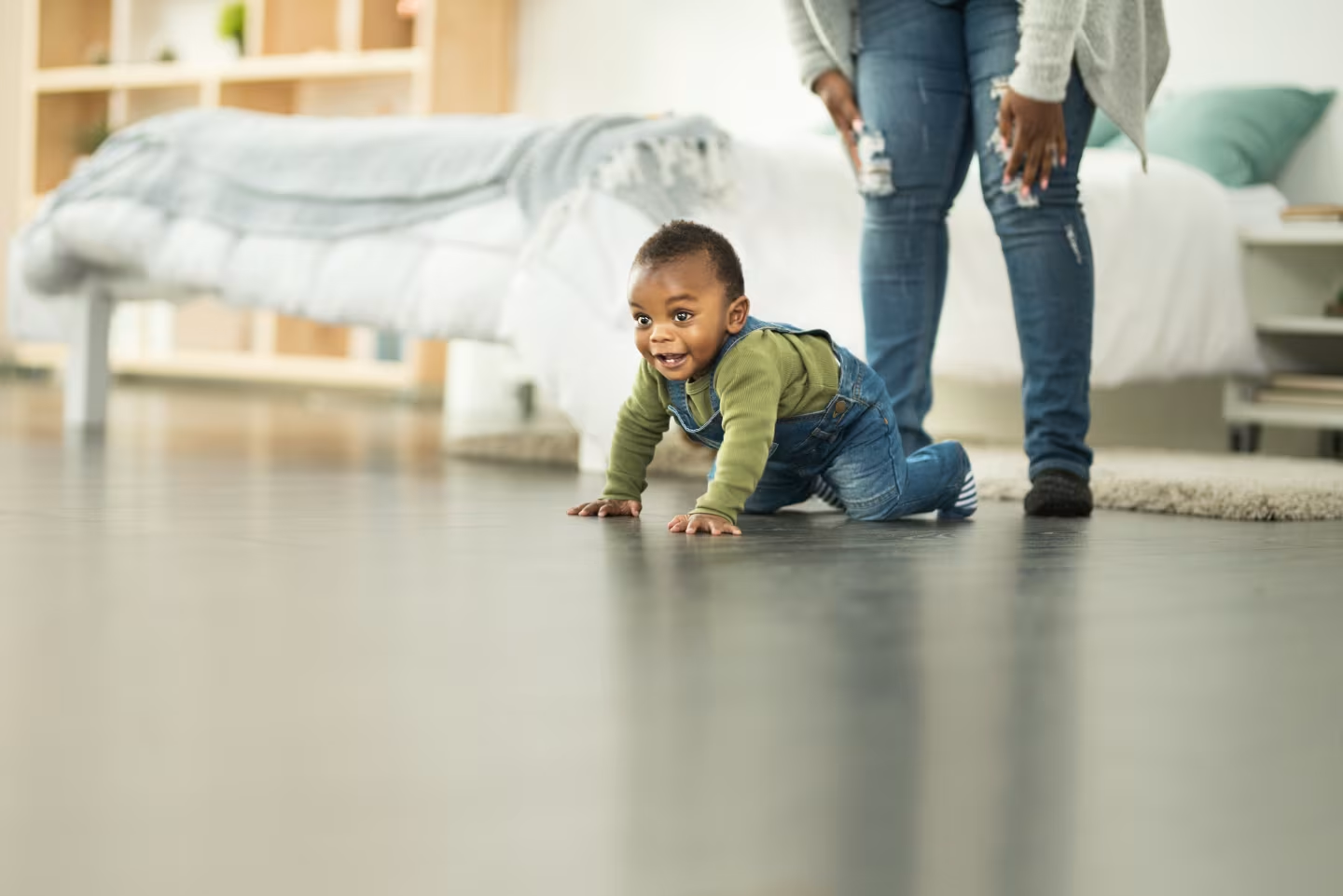
Belly crawl
Belly crawling also known as arm or commando crawling may or may not precede classical hands/knees crawling. Babies may army crawl in a forward motion by pulling themselves forward on their bellies. You’ll likely see that reciprocal opposite arms and legs type of pattern as they move.
Some babies will utilize an inch-worm style crawl in the belly position too. This is where they pull themselves forward with both arms and then do a belly flop to the ground. While they’re pulling themselves forward they’re almost in a plank-type position on their hands and feet. The army crawl style is more common but your baby may experiment with either or both.

Bear crawl
As its name suggests, in this style of crawling, babies are up on outstretched hands and feet just like a bear as they move forward. If you don’t see this type of crawling earlier on, you may see it later as your baby prepares to stand upright.
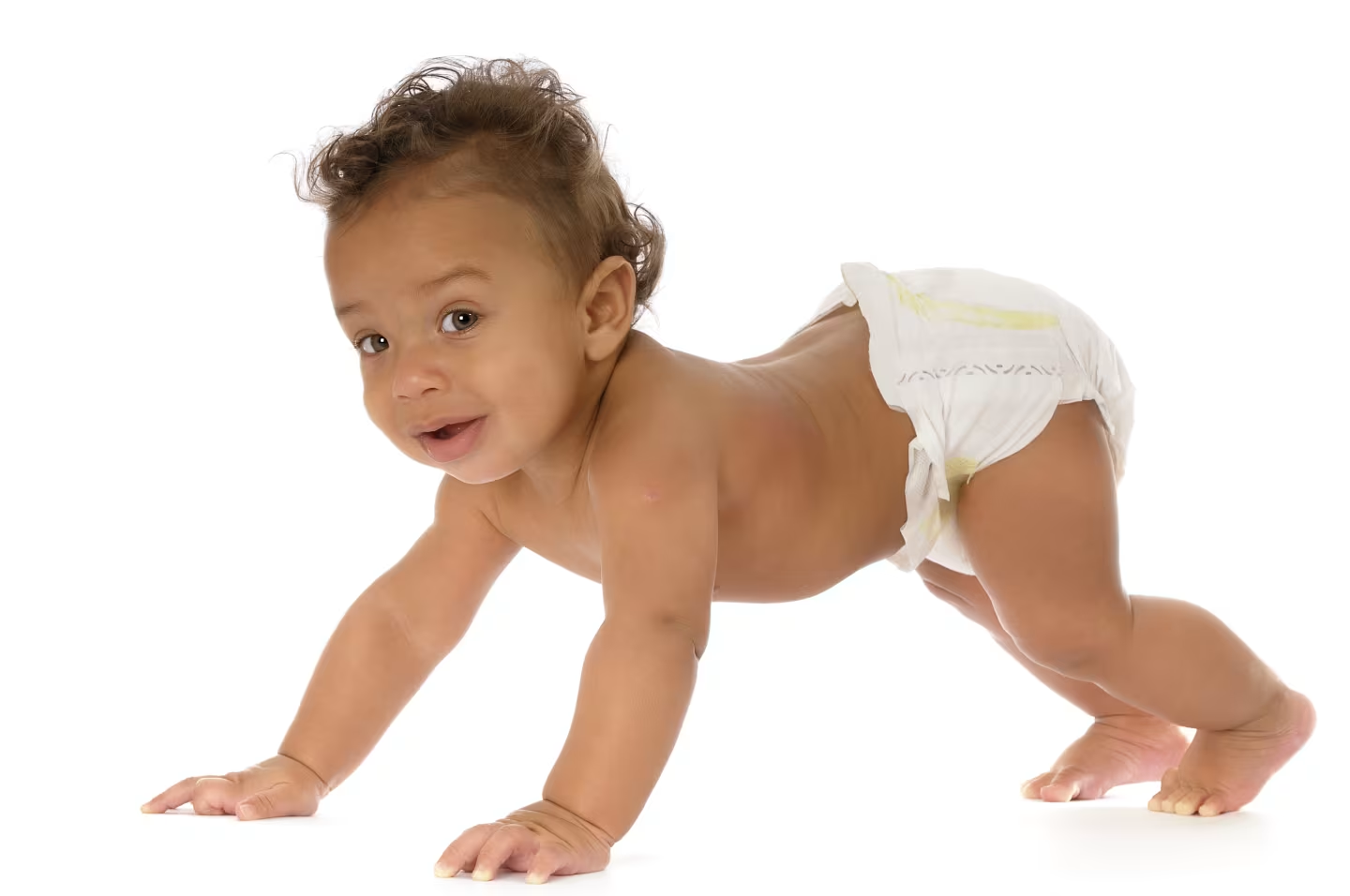
Rolling crawl
Some babies utilize a rolling maneuver to get from point A to point B. While it may seem dizzying, it can accomplish that goal of being able to explore their environment through movement.

Bottom scoot crawl
In this style of crawling, babies are sitting upright and use their arms to scoot their bottoms forward across the floor. They may also use a leg to help and may move in various directions.
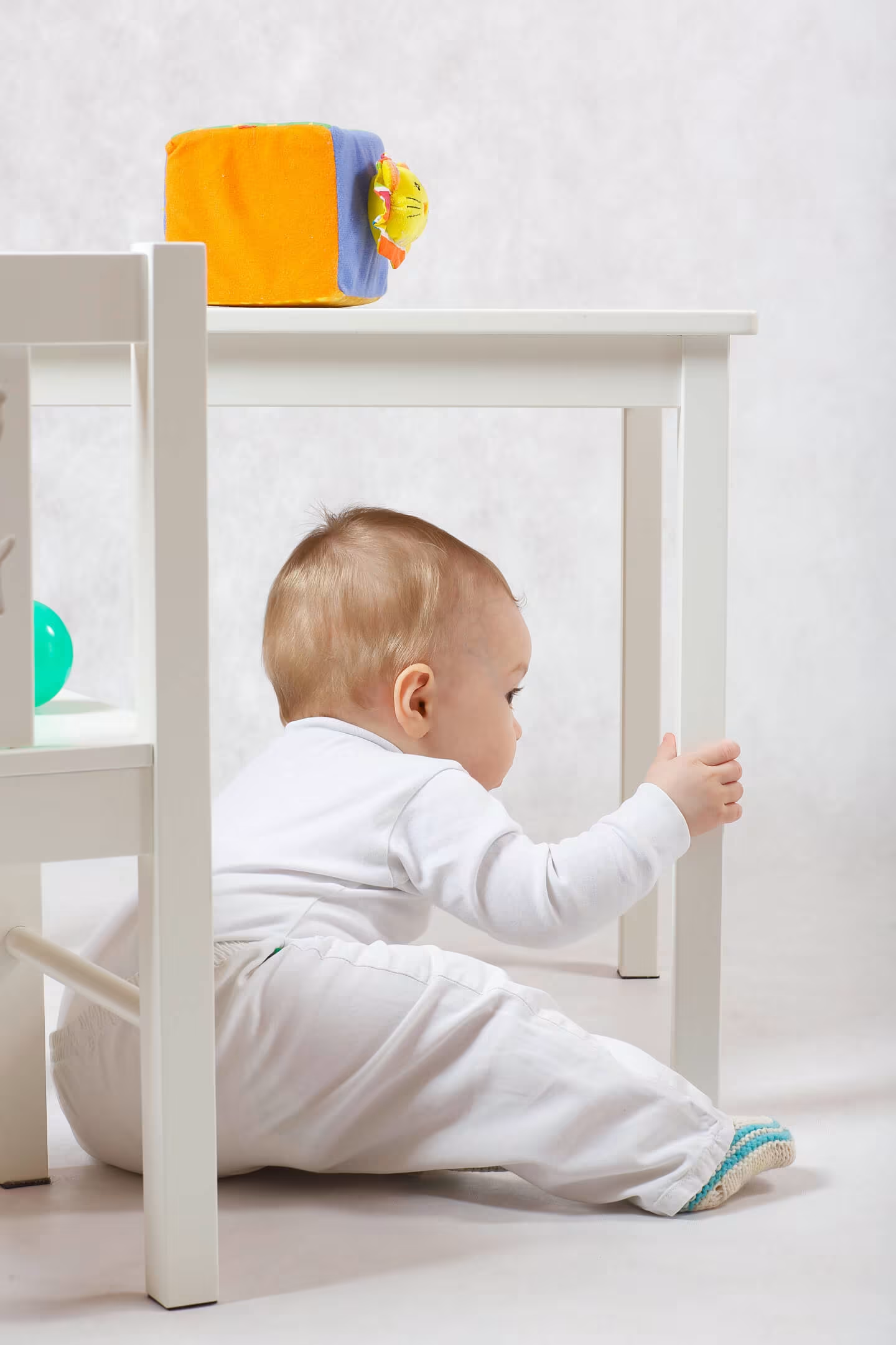
Crab crawl
In this less common crawl style, babies propel themselves forward using one knee and one foot with both arms.

Keep your crawler safe
Now that your baby is on the move, it’s important to ensure their world is safe! If you haven’t already, babyproof your space. It can be helpful to get down on all fours and move around your house to see the world as your baby does. For more information on how to make your home safe for your mobile baby, visit our .
Make sure you keep a close eye on your baby now that they can move on their own. If you place them down on a bed or couch, anticipate that they will not sit still! The floor is going to be the safest place for your baby to rest from here on out. If you are concerned your baby will bruise their knees or bump their head on your hard floor, consider utilizing a crawling mat.
When to worry about baby not crawling: When to call the doctor
There are so many ways babies can move before they learn to crawl and so many ways to crawl too. While crawling is important in the development of muscles and balance needed to eventually stand upright and walk, not all babies crawl. In some cultures, parents carry their infants around to avoid crawling on the ground for various reasons including to prevent contracting germs and to keep them safe from predators.
Some studies have found that these babies do not suffer any negative sequelae as a result of never crawling. There is no evidence to support that skipping milestones, such as crawling, leads to any developmental issues []. As long as your baby is moving and showing interest in exploring the world around them, they’re probably developing just fine!
If you notice your baby isn’t attempting to move or isn’t moving both sides of their body, then we recommend getting in contact with your trusted healthcare provider. You can also reach out for an evaluation by your local early intervention clinicians. In the United States, these evaluations are free, a doctor’s referral is not necessary, and they come right to your house. You can find your local early intervention therapists by .
Takeaway
Baby development varies.
Crawling on hands and knees typically happens between the ages of 7 and 10 months, though some babies will start crawling later and others won’t crawl on their hands and knees at all before they walk.
There are several stages of crawling as well as styles of crawling.
There are activities and strategies you can utilize to help your baby learn to crawl.
There is no evidence to support that skipping milestones such as crawling leads to further developmental issues.
If you're curious about what lies ahead in the next stage, glimpse into the future to see what you might experience .
Crawling FAQ
Share article:
Note: The content on this site is for informational purposes only and should not replace medical advice from your doctor, pediatrician, or medical professional. If you have questions or concerns, you should contact a medical professional.

